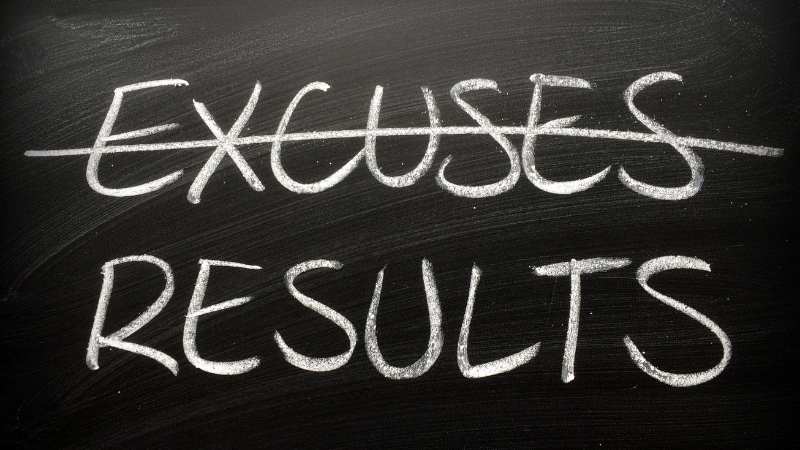When I was young, the way I described myself was simple: “a kid from the squatter area.” That label shaped my view of the world. Maybe that’s why I never invited anyone to our home. I saw myself through the lens of my environment, limiting who I could be.
But that changed when I entered the seminary. I suddenly became something else—a servant of God. My world expanded, but even then, it was just another label, another box. I wore different hats as life went on—an activist, a teacher, a trainer, a speaker. And each time, I found myself slipping into a new identity, a new box, as if that’s all I could be.
Here’s the thing: it’s easy to put ourselves into characters and slap on a label. We get comfortable thinking, “This is who I am,” when in reality, we’re so much more. Our environment, our roles, our past—they don’t define us unless we let them.
And that brings me back to you.
Today, I want you to pause and really ask yourself: How do you characterize yourself?
Who Are You, Really?
You’ve been asked this before. Probably hundreds of times. “How do you characterize yourself?” A harmless question, right? You likely answer it without thinking—spitting out a title, a role, a generic answer.
“I’m a manager.” “I’m a business owner.” “I’m a supervisor.”
But let’s get real. Is that who you really are? Or is it just a title on your business card?
Let’s peel it back.
Why the Question Matters More Than Ever
You’re not just filling a role. You’re not just checking boxes or following routines. You’ve worked hard to get where you are. But here’s the truth: how you define yourself shapes everything around you. It affects how your team sees you, how your clients perceive you, and how far you can actually go.
Think about it. Are you someone who solves problems, or are you the person who transforms businesses? Are you just a manager, or are you the one who develops leaders? There’s a big difference.
How you characterize yourself drives your actions. And your actions either push you toward growth—or keep you in neutral.
Understanding the C-Game, B-Game, and A-Game
This is crucial. We all have levels of performance that we operate in.
- Your C-game is made up of the routine tasks you do that keep things going. It’s necessary but low-impact work—like running on a hamster wheel. You’re working, but it’s not moving you forward.
- The B-game is where you get productive, focusing on activities that yield 10x results. These are the efforts that matter more, but they’re still not unlocking your full potential.
- The A-game is where exponential results happen. This is where you’re strategic, making the highest impact by doing the right work that drives 100x results.
Want to dig deeper into these levels? Download my free PDF guide that will walk you through how to elevate from your C-game to your B-game, and eventually, to your A-game.
Stop Playing Safe
Many people play it safe with their answer. They stay in the comfortable zone, defining themselves by what they’ve always done. But that’s where stagnation hides.
Take Mario. He was managing a small team in his company, checking off tasks, hitting deadlines—standard C-game stuff. He knew his work mattered, but deep down, he wasn’t doing anything that really moved the needle. One day, his mentor asked him a question that shook him: “Do you see yourself as a manager, or as a leader?”
It hit him. He was playing small. He was managing projects but not leading innovation. Not yet. So, Mario made a shift. He started delegating routine tasks, investing more time in mentoring his team. Within a year, he wasn’t just meeting deadlines—he was shaping the future of the business. His role? Now he saw himself as the go-to leader for developing other leaders. That shift in identity took his career, and his team, to a new level.
This is what happens when you stop defining yourself by your C-game and start stepping into your B-game or even A-game.
Your Default Story Is Holding You Back
Here’s a tough truth: your current story might be limiting your potential.
Imagine this—Jose, another manager, always saw himself as the ‘fixer.’ Whenever his team hit a snag, he’d roll up his sleeves and jump in. He was dependable. People knew they could count on him. But here’s the problem: he defined himself by his ability to solve everyone else’s problems. He thought that was his edge.
In reality, it was his cage.
He was stuck in his C-game, running on a hamster wheel of small tasks. And guess what? His team wasn’t growing, either. By positioning himself as the fixer, Jose stopped empowering his team to fix things themselves. They relied on him. His potential—and theirs—hit a ceiling.
So, I ask you again: How do you characterize yourself? Are you the fixer, the problem-solver, or the person who transforms situations, develops leaders, and scales growth?
A Simple Shift in Your Thinking
Characterizing yourself isn’t just about slapping on a fancier job title. It’s about deciding what kind of impact you want to make.
Ask yourself these questions:
- What do you stand for?
- What drives you?
- What do people come to you for?
The answers are there, even if you haven’t thought about them deeply yet. If you’re leading a team, are you nurturing their growth? Are you positioning yourself as the person who creates long-term change? Or are you still stuck solving problems that someone else could fix?
Break Out of the Mold
Look, I get it. You’re busy. You’re handling everything coming at you, and reflection doesn’t always feel like a priority. But if you want to move beyond your current role—if you want to lead on a bigger level, you need to define yourself differently.
It starts with that simple shift in your thinking.
Stop thinking of yourself as someone who just executes. Start seeing yourself as someone who creates, transforms, and innovates. That’s where your B-game lies. And the A-game? It’s waiting for you to take it to the next level.
Your ticket to the next level.
When Mario stopped seeing himself as just a manager and embraced the role of leadership developer, everything changed. When Jose realized he needed to empower his team instead of being their crutch, the whole dynamic shifted.
How you characterize yourself isn’t just a philosophical exercise—it’s your ticket to the next level. And when you get it right, the way you work, the way you lead, and the way others respond to you will never be the same.
So, ask yourself again: Who are you, really?
And then start playing bigger.








